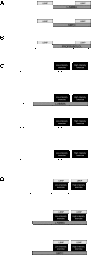Sympathetic activation increases NO release from eNOS but neither eNOS nor nNOS play an essential role in exercise hyperemia in the human forearm
- PMID: 23436331
- PMCID: PMC3652092
- DOI: 10.1152/ajpheart.00783.2012
Sympathetic activation increases NO release from eNOS but neither eNOS nor nNOS play an essential role in exercise hyperemia in the human forearm
Abstract
Nitric oxide (NO) release from endothelial NO synthase (eNOS) and/or neuronal NO synthase (nNOS) could be modulated by sympathetic nerve activity and contribute to increased blood flow after exercise. We examined the effects of brachial-arterial infusion of the nNOS selective inhibitor S-methyl-l-thiocitrulline (SMTC) and the nonselective NOS inhibitor N(G)-monomethyl-l-arginine (l-NMMA) on forearm arm blood flow at rest, during sympathetic activation by lower body negative pressure, and during lower body negative pressure immediately after handgrip exercise. Reduction in forearm blood flow by lower body negative pressure during infusion of SMTC was not significantly different from that during vehicle (-28.5 ± 4.02 vs. -34.1 ± 2.96%, respectively; P = 0.32; n = 8). However, l-NMMA augmented the reduction in forearm blood flow by lower body negative pressure (-44.2 ± 3.53 vs. -23.4 ± 5.71%; n = 8; P < 0.01). When lower body negative pressure was continued after handgrip exercise, there was no significant effect of either l-NMMA or SMTC on forearm blood flow immediately after low-intensity exercise (P = 0.91 and P = 0.44 for l-NMMA vs. saline and SMTC vs. saline, respectively; each n = 10) or high-intensity exercise (P = 0.46 and P = 0.68 for l-NMMA vs. saline and SMTC vs. saline, respectively; each n = 10). These results suggest that sympathetic activation increases NO release from eNOS, attenuating vasoconstriction. Dysfunction of eNOS could augment vasoconstrictor and blood pressure responses to sympathetic activation. However, neither eNOS nor nNOS plays an essential role in postexercise hyperaemia, even in the presence of increased sympathetic activation.
Keywords: endothelial nitric oxide synthase; exercise; forearm blood flow; neuronal nitric oxide synthase; sympathetic vasoconstriction.
Figures



References
-
- Buckwalter JB, Taylor JC, Hamann JJ, Clifford PS. Role of nitric oxide in exercise sympatholysis. J Appl Physiol 97: 417–423, 2004 - PubMed
-
- Clifford PS, Hellsten Y. Vasodilatory mechanisms in contracting skeletal muscle. J Appl Physiol 97: 393–403, 2004 - PubMed
-
- Copp SW, Hirai DM, Ferguson SK, Musch TI, Poole DC. Role of neuronal nitric oxide synthase in modulating microvascular and contractile function in rat skeletal muscle. Microcirculation 18: 501–511, 2011 - PubMed
Publication types
MeSH terms
Substances
Grants and funding
LinkOut - more resources
Full Text Sources
Other Literature Sources

